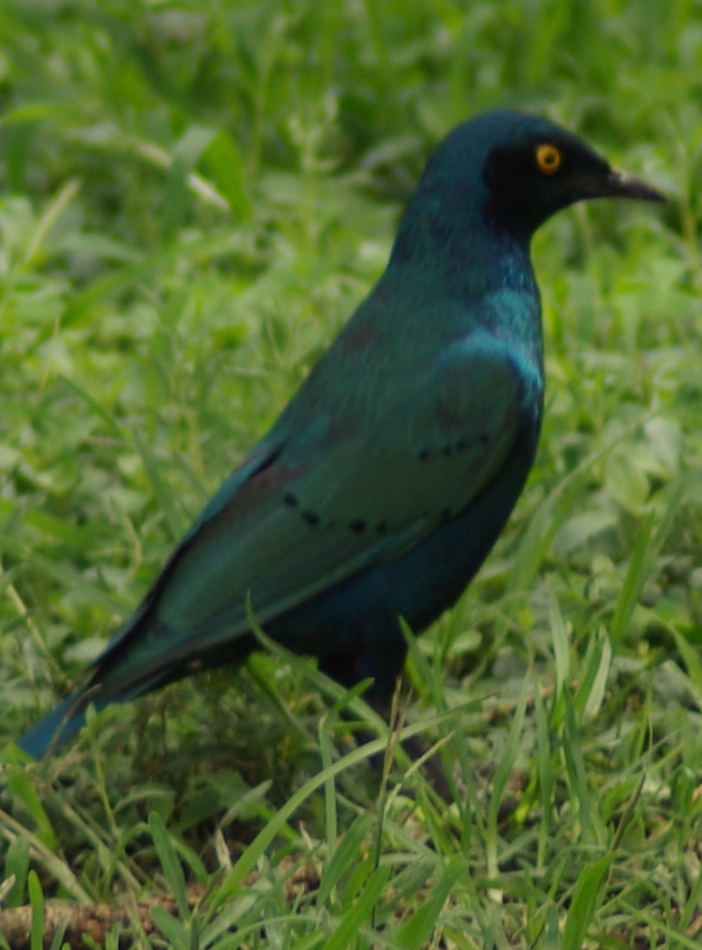|
| 질의: description | 결과: 9627번째/10150 | |
Greater Blue-eared Glossy-starling (Lamprotornis chalybaeus) - Wiki
| 제목: | Greater Blue-eared Glossy-starling (Lamprotornis chalybaeus) - Wiki
| |

| 해상도: 702x950
파일크기: 585903 Bytes
촬영일: 2007:06:24 03:53:43
사진기: PENTAX K10D (PENTAX Corporation )
Exposure: 1/180 sec
Focal Length: 300/1
등록시간: 2007:10:24 11:38:47
|
Greater Blue-eared Glossy-starling
From Wikipedia, the free encyclopedia
[Photo] Greater Blue-eared Glossy Starling (or just Greater Blue-eared Starling), Lamprotornis chalybaeus, Sweetwaters Tented Camp, Kenya. Date June 24, 2007. Author Jerry Friedman (http://commons.wikimedia.org/wiki/User:JerryFriedman) Copyright (C) 2007 Jerry Friedman
Permission is granted to copy, distribute and/or modify this document under the terms of the GNU Free Documentation License, Version 1.2 or any later version published by the Free Software Foundation; with no Invariant Sections, no Front-Cover Texts, and no Back-Cover Texts. A copy of the license is included in the section entitled "GNU Free Documentation License". |
The Greater Blue-eared Glossy Starling, or Greater Blue-eared Starling, Lamprotornis chalybaeus, breeds from Senegal east to to Ethiopia, and south through eastern Africa to northeastern South Africa and Angola It is a very common species of open woodland which undertakes some seasonal movements.
Description
The Greater Blue-eared Glossy Starling is a 22 cm long, short tailed bird. This starling is glossy blue-green with a purple-blue belly and blue ear patch. Its iris is bright yellow or orange. The sexes are similar, but the juvenile is duller and has blackish brown underparts.
The populations from southern Kenya southwards are smaller than northern birds and are sometimes considered to be a separate subspecies, L. c. sycobius.
The Lesser Blue-eared Glossy Starling is very similar to this species, but the blue of the belly does not extend forward of the legs in that bird.
The Greater Blue-eared Glossy Starling has a range of musical or grating calls, but the most familiar is a nasal squee-ar.
Behaviour
Breeding
The Greater Blue-eared Glossy Starling nests in holes in trees, either natural or excavated by woodpeckers or barbets. It will also nest inside the large stick nests of the Sacred Ibis or Abdim's Stork. The three to five eggs are greenish-blue with some brown or purple spots, and hatch in 13-14 days. The chicks leave the nest in another 23 days.
This species is parasitised by the Great Spotted Cuckoo and occasionally the Greater Honeyguide
Roosting
The Greater Blue-eared Glossy Starling is highly gregarious and will form large flocks, often with other starlings. Its roosts, in reedbed, thorn bushes, or acacia, may also be shared.
Feeding
Like other starlings, the Greater Blue-eared Glossy Starling is an omnivore, taking a wide range of invertebrates seeds and berries, especially figs, but is diet is mainly insects taken from the ground.
It will perch on livestock, feeding on insects disturbed by the animals and occasionally removing ectoparasites.
http://en.wikipedia.org/wiki/Greater_Blue-eared_Glossy-starling
| The text in this page is based on the copyrighted Wikipedia article shown in above URL. It is used under the GNU Free Documentation License. You may redistribute it, verbatim or modified, providing that you comply with the terms of the GFDL. |
|
댓글 |
|---|
| | comprar cialis |
|
| im8kyi bdkgxyym ttjnsmnm jarlfsas |
| | 손님 |
|
Scientific Name: Lamprotornis chalybaeus Ehrenberg, 1828
Common Names: Greater Blue-eared Starling, Greater Blue-eared Glossy-starling, Blue-eared Glossy Starling
French: Choucador à oreillons bleus, Merle métallique à oreillons bleus; German: Grünschwanz-Glanzstar; Spanish: Estornino Orejiazul
Taxonomy: Lamprotornis chalybaeus Hemprich and Ehrenberg, 1828, Ambukol, Dongla district, Sudan. |
^o^
동물그림창고 똑똑전화 누리집
^o^
|
|
|

